Paul Laurence Dunbar
(1872 - 1906)
EXPLORE THE BOOKS
Paul Laurence Dunbar, born in Dayton, Ohio on June 27, 1872, and was one of the first African Americans to attain international recognition as a poet and novelist. Dunbar was known for his use of dialect, and was also an accomplished poet and novelist in standard English. At age seventeen, he published his own newspaper, the Dayton Tattler, an African American newspaper printed by his high school classmate and friend, Orville Wright. His first book of poems, Oak and Ivy, was published in 1893. During his life, Dunbar published 12 books of poetry, four novels, and four books of short stories. Several of his works were also put to music. Paul Laurence Dunbar died of tuberculosis in Dayton on February 6, 1906.
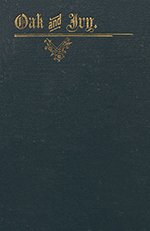
Oak and Ivy (1893)
First published by Press of United Brethren Publishing House: Dayton, OH
Oak and Ivy was Dunbar's first published volume of poetry. He self-published the book and sold it for $1 to the people who rode in the elevator he operated in the Callahan Building in downtown Dayton. Dunbar also took the book to the 1893 World's Columbian Exposition in Chicago, Illinois, where he worked for Frederick Douglass in the Haitian exposition.
Read "Oak and Ivy" in CORE Scholar
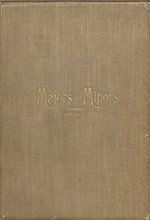
Majors and Minors (1895)
First published by Hadley & Hadley, Printers and Binders, Toledo, Ohio
Majors and Minors reflects the dual styles of Dunbar's poetry. The "major" poems were works written in standard English, while the "minor" poems were his dialect poems. However, it was the "minors" section which caught the attention of reviewer William Dean Howells, editor of Harper's Weekly. Howells' review of the book singled out and praised Dunbar's use of dialect, bringing national attention to those works to the detriment of his poetry in standard verse.
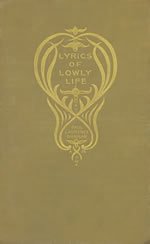
Lyrics of Lowly Life (1896)
Lyrics of Lowly Life contains primarily works from Dunbar's two previous books, Oak and Ivy and Majors and Minors. The book was supported financially by Henry A. Tobey and Charles A. Thatcher, two gentlemen from Toledo, Ohio, who had also assisted with the funding of Majors and Minors. The book also contained an important introduction, written by William Dean Howells. The success of this book prompted Dunbar to travel on a six-month reading tour of England.
Read "Lyrics of Lowly Life" in CORE Scholar
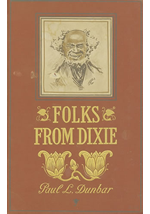
Folks from Dixie (1898)
First published by Dodd, Mead and Company
Dunbar's first collection of short stories was published in 1898. Much like his earlier books of poetry, Dunbar's stories examined the lives of African-Americans both before and after emancipation. While his poetry tended to portray more sentimental situations, this collection of stories offered a harsher look at the realities of the situation, especially regarding racial prejudice. His first work of fiction was well-received, which encouraged him to publish more.
Read "Folks From Dixie" in CORE Scholar

The Uncalled (1898)
First published by Dodd, Mead and Company
The Uncalled was Dunbar's first novel, and many consider it to be semi-autobiographical in nature. The book told the story of fictional pastor Frederick Brent, a man plagued by childhood family issues whose adventures in the ministry proved less than successful. The book was much criticized as being dull and unengaging.
Read "The Uncalled" in CORE Scholar
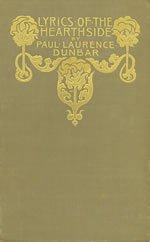
Lyrics of the Hearthside (1899)
Several of the poems in Lyrics of the Hearthside had appeared previously in magazines such as The Ladies' Home Journal, The Century Magazine, and Cosmopolitan Magazine. The book also contains one of Dunbar's most famous poems, "Sympathy," which later inspired the title to Maya Angelou's autobiography, I Know Why The Caged Bird Sings. Many of the covers of Dunbar's published works reflect the tone of the works inside. Here, for example, the cover design incorporates cotton, connecting with Dunbar's descriptions of plantation agriculture and life.
Read "Lyrics of the Hearthside" in CORE Scholar.
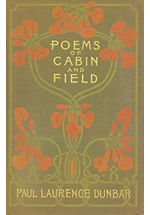
Poems of Cabin and Field (1899)
Illustrated with Photographs by the Hampton Institute Camera Club and Decorations by Alice Morse.
First published by Dodd, Mead & Co.
Read "Poems of Cabin and Field" in CORE Scholar.
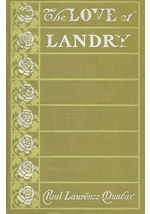
The Love of Landry (1900)
First published by Dodd, Mead and Company
Recovering from a strong bout with pneumonia, Dunbar spent time in Colorado attempting to recoup his health. One result of his time there was his second novel, The Love of Landry. The heroine, much like Dunbar, is in Colorado to recuperate and falls in love with a cowboy. Like his previous novel, his second attempt did not find favor with critics, and many focused on what they considered a weak presentation of characters.
Read "The Love of Landry" in CORE Scholar
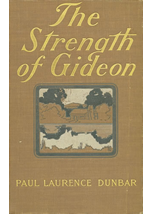
The Strength of Gideon (1900)
First published by Dodd, Mead and Company; Illustrated by Edward Windsor Kemble
Dunbar's second collection of short stories echoed his works of poetry in that it was a combination of works full of sentimental humor and works which told of the harsher sides of the African-American experience, both before and after emancipation. Critics tended to promote the sentimental stories at the expense of his harsher accounts of that experience. Later critics, however, suggest these stories demonstrate Dunbar's criticism of racial inequality in American society.
Read "The Strength of Gideon" in CORE Scholar
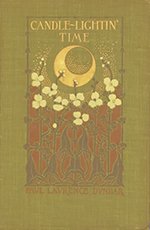
Candle-Lightin' Time (1901)
First published by Dodd, Mead and Company
Candle-Lightin' Time is another illustrated publication, containing photographs taken by Leigh Richmond Miner of the Hampton Institute Camera Club. Further decorations were created by Margaret Armstrong.
Read "Candle-Lightin' Time" in CORE Scholar
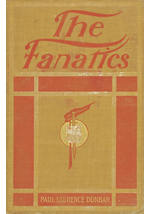
The Fanatics (1901)
First published by Dodd, Mead and Company
Like his previous two novels, Dunbar's third novel, The Fanatics, met little if any critical acclaim. The story is set in an Ohio community at the beginning of the Civil War and focuses on the white families and their disputes with neighbors over the sympathetic divide between North and South in that conflict. Considered a failure both commercially and personally, the book received critical commentary primarily concerning the lack of depth in its characterization of the community members.
Read "The Fanatics" in CORE Scholar
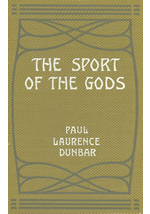
The Sport of the Gods (1902)
First published by Dodd, Mead and Company; Illustrated by B. Martin Justice
Perhaps a reflection of the turmoil Dunbar faced personally as his health continued to decline and his marriage ended, Dunbar's fourth and final novel, The Sport of the Gods, is considered a protest novel. Received far better by critics than any previous novel, the book tells the story of Berry Hamilton, a black butler charged with theft by his white employers. The story follows the family through the hardships they encounter as a result of this experience.
Read "The Sport of the Gods" in CORE Scholar
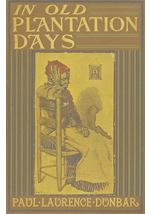
In Old Plantation Days (1903)
First published by Dodd, Mead and Company
With this collection of short stories, Dunbar sought to draw on the success of his dialect poems by recreating and portraying the southern plantation during slavery. The stories focus on the stereotypical portrait of slaves as obedient workers happy to spend their lives in service of their benevolent owner. His attempt to find success was only partially realized, as his stories drew not only criticism but, in some cases, anger at their very stereotypical nature. The book itself, however, proved to be more lucrative than previous fiction works had been for the author.
Read "In Old Plantation Days" in CORE Scholar

Lyrics of Love and Laughter (1903)
First published by Dodd, Mead and Company
Lyrics of Love and Laughter was crafted following another severe round of pneumonia. With this work, however, Dunbar secured his reputation as the premier African-American poet in the United States at the time. Like earlier volumes, this book contained poems in both dialect and standard English, reflecting its mix of both sentimental and realistic depictions of African-American life. The book included eleven poems not previously collected within a book.
Read "Lyrics of Love and Laughter" in CORE Scholar
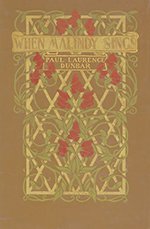
When Malindy Sings (1903)
First published by Dodd, Mead and Company
When Malindy Sings is illustrated with photographs taken by the Hampton Institute Camera Club, and also features decorations created by Margaret Armstrong. The title for this book comes from one of Dunbar's most well-known dialect poems, one which emphasizes the more soulful aspects and the heartfelt, impromptu music of many of his poems. The poem was inspired by his mother Matilda's habit of singing in the kitchen and was first published in 1896.
Read in "When Malindy Sings" in CORE Scholar
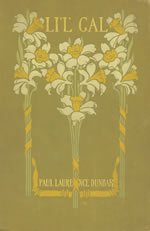
Li'l' Gal (1904)
First published by Dodd, Mead and Company
Illustrated with photographs and decorations, the majority of poems in this book had been previously published. However, Dunbar did include four new poems: "The Plantation Child's Lullaby," "Blue," "Charity," and "Curiosity." The title poem, "Li'L' Gal," was later recorded as a vocal performance by internationally known concert singer, Paul Robeson.
Read "Li'l' Gal" in CORE Scholar

The Heart of Happy Hollow (1904)
First published by Dodd, Mead and Company
In his final collection of short stories, Dunbar’s focus remained on life in America for African-Americans, but rather than a singular focus on plantation society, this set of stories presented a variety of perspectives. One story, which grew in favor during the 20th century, focused on the immorality, or what he called the "folly," of lynching.
Read "The Heart Happy Hollow" in CORE Scholar

Howdy Honey Howdy (1905)
First published by Dodd, Mead and Company
Illustrated with photographs by Leigh Richmond Miner, Howdy Honey Howdy contains many previously published poems by Dunbar. One difference from previous covers is the photograph of a woman in a doorway, hand extended, as if welcoming the reader and inviting one to enter.
Read "Howdy Honey Howdy" in CORE Scholar
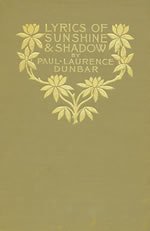
Lyrics of Sunshine and Shadow (1905)
First published by The Century Company
This book is a collection of previously published poems by Dunbar, containing works both in dialect and in standard English
Read "Lyrics of Sunshine and Shadow" in CORE Scholar
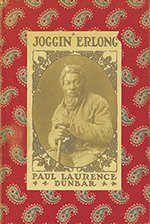
Joggin' Erlong (1906)
First published by Dodd, Mead and Company
Joggin’ Erlong was the final collection of Dunbar’s poetry published during his lifetime. His health continued to decline after his diagnosis with tuberculosis. Separated from his wife in 1902, Dunbar eventually returned home to Dayton to live with his mother, Matilda. Much of his later work between 1902-1906 reflects his increasingly ill health.
Read "Joggin' Erlong" in CORE Scholar
